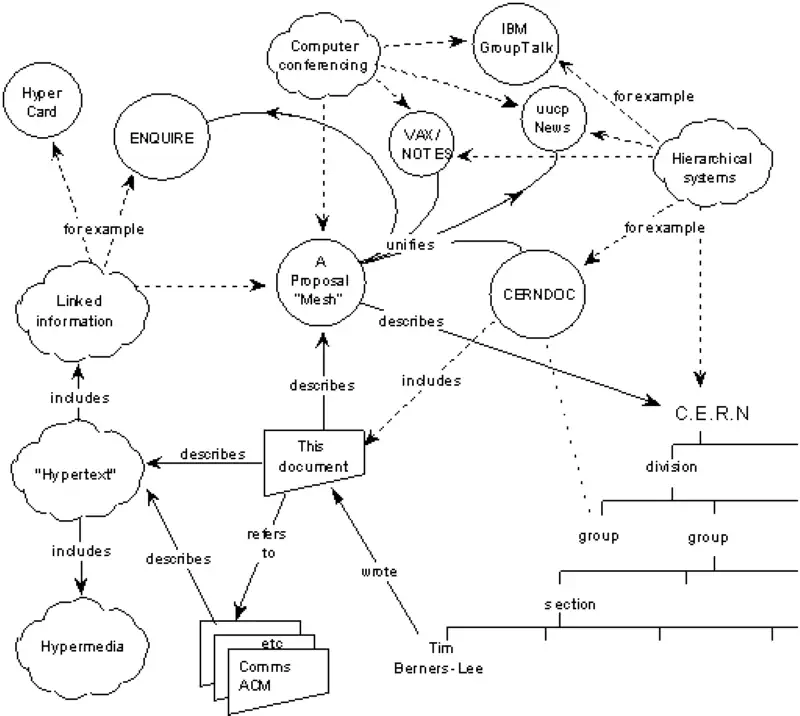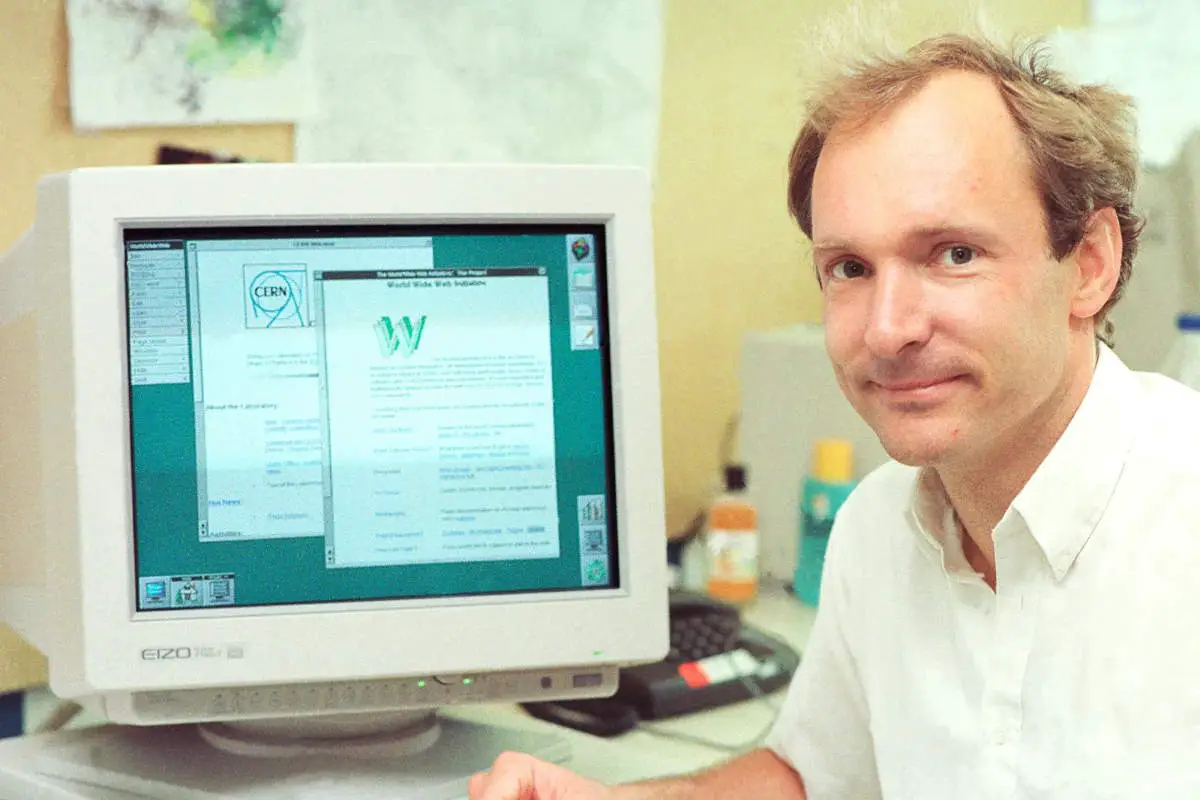On March 12, 1989, the English computer scientist who invented the World Wide Web, Sir Tim Berners-Lee sent a document to his colleagues at CERN titled “Information Management: A Proposal”. This proposal concerned the management of general information about the particle accelerators and experiments at The European Organization for Nuclear Research (CERN). In the proposal, Berners-Lee discussed the problems of information loss about complex evolving systems and suggested a solution based on a distributed hypertext system, which eventually became the World Wide Web, an Internet-based hypermedia initiative for global information sharing.
Today’s (March 12) story of what happened this day in Science, Technology, Astronomy, and Space Exploration history.

What is a hypertext?
Hypertext is basically the text displayed on a computer display or other electronic devices like smartphones with references (hyperlinks) to other text (i.e. other webpage or another website) that the reader can immediately access, usually by clicking or tapping on it. So, any text you can click/tap on the World Wide Web is a hypertext.
Tim Berners-Lee basically proposed an information-sharing concept between scientists in universities and institutes around the world via a network based on servers. Essentially, his development is based on three key points:
- He developed the “Hypertext Markup Language” (HTML), which describes how pages with hypertext links (or just “links”) are formatted on a wide variety of computer platforms.
- With the “Hypertext Transfer Protocol” (HTTP) he defined the technical channel that computers would use to communicate over the Internet.
- The “Universal Resource Identifier” (URI), today the sub-form “Uniform Resource Locator” (URL) is more common, designates the web address with which content can be found on the Internet.
On April 30, 1993, CERN put the World Wide Web software in the public domain. A new era of telecommunications has been started.
Before WWW
The Internet existed way before the World Wide Web. There was already a network that allowed users to exchange emails and other data with each other. However, people found this network to be too complicated, so a solution had to be found. Tim Berners-Lee, therefore, wanted to create a network with which scientists and researchers could exchange ideas more easily.
In 1980, he presented his first project the European Organization for Nuclear Research (CERN). This project was based on the hypertext principle. Different texts from different publishers should therefore be connected to each other with so-called hyperlinks.
In 1984 Tim Berners-Lee returned to the CERN so that he could pursue his idea further.
A few years later, in 1989, he introduced a better network. This network had exactly the right approach to connect the hyperlink principle with the already existing Internet. But there was just one thing missing: How do you prepare the content for the network? Berners-Lee needed an adapted language so that the content could be presented to everyone.
He oriented himself to the Standard Generalized Markup Language and designed the Hypertext Markup Language (HTML). Thanks to HTML, text content and also multimedia content, such as images, can be embedded. The browser does the rest by rendering the information converted to HTML.
Just one year later, Berners-Lee conceived a global hypertext project with the Belgian informatics engineer and computer scientist Robert Cailliau. The physicist then developed the required HTTP transfer protocol, the URL, and the first browser, as well as the first web server.
The first website can still be found at http://info.cern.ch.
Tim Berners-Lee

Sir Tim Berners-Lee was born on June 8, 1955. He is the director of the World Wide Web Consortium (W3C), which oversees the continued development of the Web. The W3C aims to ensure the development of policies and protocols.
Tim Berners-Lee proposed an information management system on 12 March 1989 (mentioned above), and then implemented the first successful communication between a Hypertext Transfer Protocol (HTTP) client and server via the Internet in mid-November.
He was named in Time magazine’s list of the 100 Most Important People of the 20th Century. He was also knighted by Queen Elizabeth II in 2004.

Related: The Future of the Internet
Sources
- Tim Berners-Lee on the Internet Hall of Fame website
- “The Birth of the Web” on The European Organization for Nuclear Research (CERN) website
- Tim Berners-Lee on Wikipedia
- “Information Management: A Proposal” – Tim Berners-Lee’s March 12, 1989 proposal on the W3.org website
- Moon Landings: All-Time List [1966-2025] - February 2, 2025
- What Is Max-Q and Why Is It Important During Rocket Launches? - January 16, 2025
- Top 10 Tallest Rockets Ever Launched [2025 Update] - January 16, 2025

